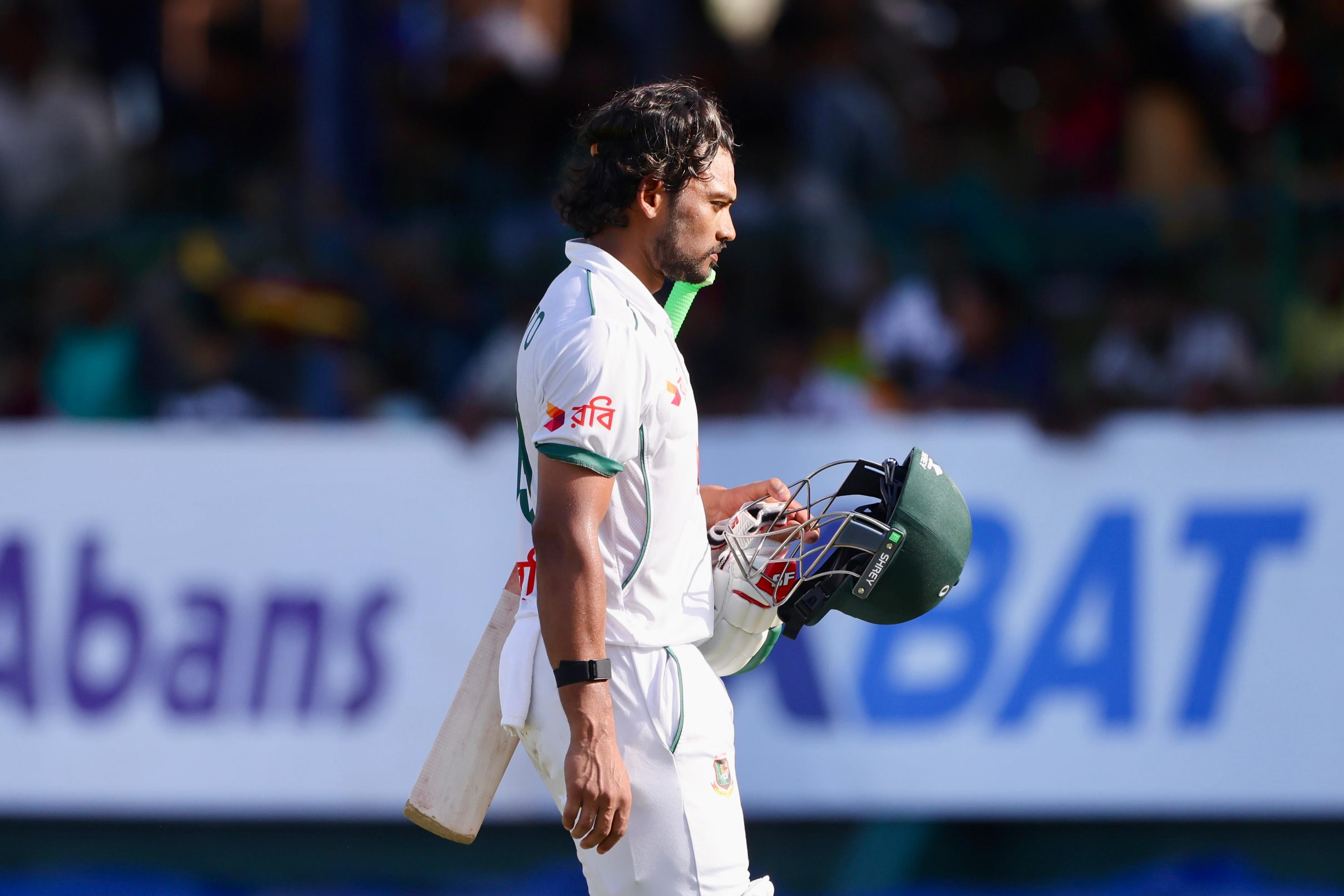Hurried to Test, hobbled in progress
In 154 Tests played, Bangladesh has managed only 23 wins — less than one victory per year on average — and suffered 112 losses.

-Daily Sun Photo
Minutes before Bangladesh’s Test silver jubilee program began on Thursday, organisers were still scrambling to tape children’s paintings onto a makeshift artboard — rushed, unfinished, and almost forgotten until the last moment.
Nearby, a plain white tent stood near the media gate at Sher-e-Bangla National Stadium. No crowds. No fanfare. Just a few former players and officials quietly gathered to remember a past that feels heavier than the present.
It was meant to mark 25 years of Bangladesh’s Test cricket journey.
Instead, it felt like the perfect symbol for a story still incomplete: hastily assembled, unprepared, and far from ready.
Thousands of miles away in Colombo, Bangladesh’s Test nightmare was playing out again.
Bowled out on the first day on a pitch meant for batting, the team watched helplessly as Sri Lanka’s Pathum Nissanka followed in the footsteps of legends Kumar Sangakkara and Mahela Jayawardene — two batsmen who once exhausted Bangladesh’s bowlers over long, grinding days.
The match’s fate was sealed even before the sun had set.
The faces have changed, but the script hasn’t.
After a promising draw in Galle, Bangladesh folded like a deck of cards in the very next match — a fitting highlight reel of their 25-year Test career: flashes of hope here and there, but mostly surrendering before the final act.
Rushed too soon and the (brutal) numbers don’t lie
Bangladesh’s elevation to Test status in 2000 came amid a wave of national pride and political will, driven by a desire to join cricket’s elite faster than the country’s cricketing infrastructure and experience could sustain.
At the time, Bangladesh had limited first-class tradition, no robust red-ball system, and no culture of patient, disciplined cricket. The International Cricket Council’s (ICC) decision to fast-track Bangladesh was hailed as historic, but it also set the stage for a challenging journey marked by growing pains and steep learning curves.
That haste showed in the stark record since then.
In 154 Tests played, Bangladesh has managed only 23 wins — less than one victory per year on average — and suffered 112 losses.
Their win percentage stands at lower than15%, well below the global average of around 30% for established Test nations.
Even home dominance is shaky. Bangladesh’s home win rate is just over 30%, reflecting an inability to consistently leverage familiar conditions.
Notably, Bangladesh’s Test victories often come in patches — like the famous wins against England in 2016, Australia in 2017, and New Zealand in 2022 — rather than sustained runs of success.
The World Test Championship has laid bare Bangladesh’s shortcomings.
Zero wins in 2019–21. One in 2021–23. Slight improvement in 2023–25, but still far behind the world’s best.
This inconsistency has kept Bangladesh near the bottom of the ICC Test rankings for most of their Test history, never breaking into the top half.
Disjointed domestic scene failed to deliver
At the heart of this failure is a domestic cricket structure that has never been allowed to flourish.
The National Cricket League (NCL), given first-class status in a rush, remains weak. Matches are often played on poor pitches, with minimal crowd or media interest.
While the Bangladesh Cricket Board (BCB) is making efforts to improve pitch quality and broadcasting, the impact remains limited.
The Bangladesh Cricket League (BCL), introduced to raise standards, has failed to ignite the passion and competitiveness needed to build a strong red-ball culture.
Red-ball players rarely get enough match practice or specialised coaching to develop the patience and skills required for Test cricket.
Instead, Test squads are too often selected based on performances in white-ball formats like the Bangladesh Premier League (BPL) and the Dhaka Premier League (DPL).
This misplaced focus rewards flair over resilience, style over substance.
Test cricket, the toughest and most demanding format, remains a burden rather than a priority.
Meanwhile, one-day cricket enjoyed targeted planning and investment between 2015 and 2019.
T20 cricket has flourished commercially and culturally, becoming Bangladesh’s most visible and popular format.
Test cricket? It has been the forgotten child.
On Thursday, Aminul Islam Bulbul — Bangladesh’s first Test centurion and current BCB president — admitted the board couldn’t host a grand celebration this time.
“We couldn’t host a fancy program this time,” he said. “But if we are still alive, we hope to do something bigger and better at the 50-year mark.”
Some of the first Test players expressed hope that Bangladesh will win many more matches in the future while admitting the team hadn’t done enough in the past quarter-century.
But amid the rushed artboards and modest tents, their optimism felt fragile, almost wistful — a stark reminder that Bangladesh’s Test journey began in haste and has been a rocky, uneven road ever since.
What was once a dream fast-tracked before its time has yet to fully take shape.
The silver jubilee was less a celebration of triumph and more a reflection on a journey marked by rushed beginnings, missed opportunities, and the long, hard grind still ahead.


